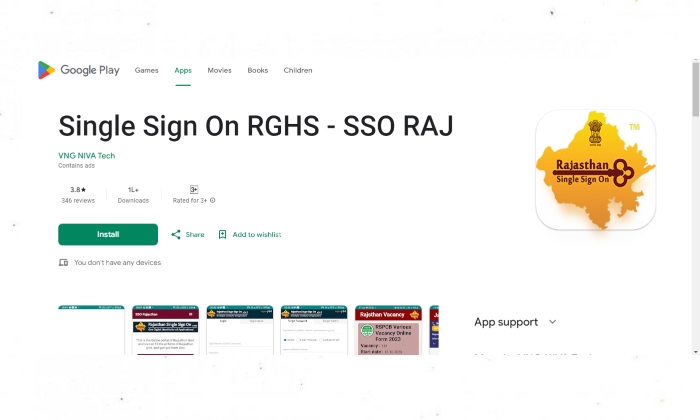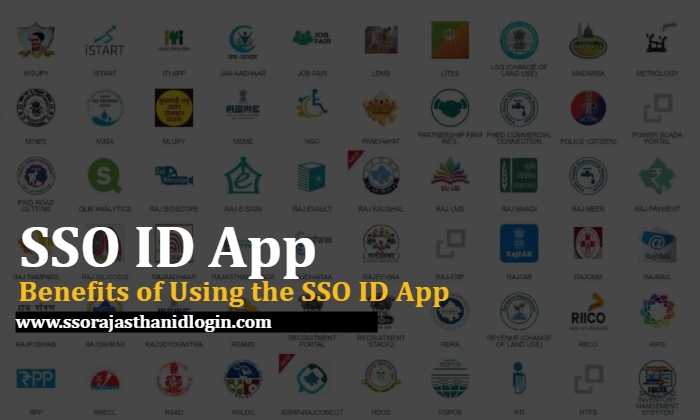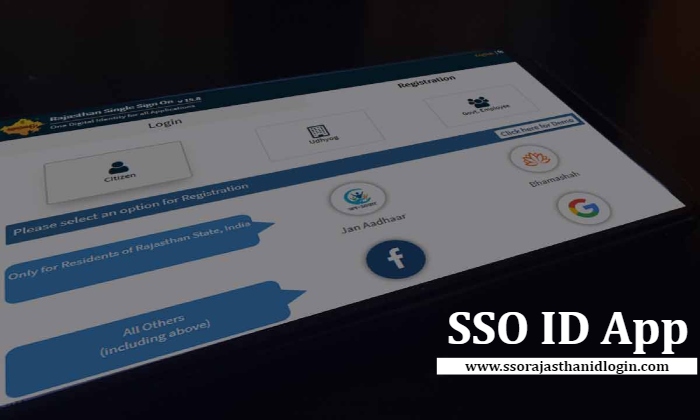SSO ID App: The Future of Simple and Secure Online Authentication

Table of Content
- SSO ID App: Top Benefits of Using Single Sign-On Technology
SSO ID App: Top Benefits of Using Single Sign-On Technology
Sso Id App Offers Seamless Authentication Across Multiple Apps And Services. Learn How To Simplify Login Processes And Improve Security Effortlessly.
SSO ID App: The Future of Simple and Secure Online Authentication
SSO ID App It can get tiresome and time-consuming to log into each online service, platform, and program separately in a world where individuals oversee many of them. This problem is fixed by the SSO ID App (Single Sign-On ID App), which enables users to access several services with a single set of login credentials. This article examines the features, advantages, and operation of the SSO ID APP as well as how it may streamline the login process and increase security.
What is SSO?
Definition of SSO (Single Sign-On)
Users can access several connected but separate software systems by logging in just once with the Single Sign-On (SSO) authentication approach. Users only need to remember one set of credentials to authenticate themselves and gain access to all linked systems and apps, saving them the trouble of memorising numerous passwords for various accounts.
How Does the SSO ID App Work?
Users can authenticate themselves once with the SSO ID APP's integrations with other apps and services. Through communication with identity providers (IdPs), the app enables users to access services without the need for further logins by verifying their credentials.
With the SSO ID APP, for instance, you could be able to access your cloud storage, project management tools, and other business apps at the same time as you enter into your email account—all without having to log in again.
 SSO ID APP Work Details
SSO ID APP Work DetailsKey Features of the SSO ID App
1. Centralized Authentication
The SSO ID APP acts as a single authentication point, so users don’t have to manage multiple passwords for different platforms. This feature simplifies access to various services, improving user experience and reducing password fatigue.
2. Multi-Platform Integration
Whether you're using cloud applications, enterprise software, or mobile apps, the SSO ID APP can integrate with them all. It supports various platforms, from SaaS applications like Google Workspace and Microsoft 365 to on-premises software.
3. Enhanced Security with MFA
The SSO ID APP typically supports multi-factor authentication (MFA), which requires additional verification steps beyond a password. This improves security by ensuring that only authorized users access sensitive systems.
4. Customizable User Experience
Many SSO ID APPs offer a customizable interface that can adapt to the specific needs of users or organizations. Admins can manage and control access to specific apps based on user roles and permissions.
5. Reduced IT Support Costs
Since users only need to remember one password, password-related issues decrease, leading to fewer IT helpdesk requests for password resets or account recovery.
 SSO ID App Download
SSO ID App DownloadHow the SSO ID App Improves Security
1. Eliminates Weak Password Usage
Weak or frequently used passwords are among the biggest security threats of our day. By doing away with the need for several passwords, the SSO ID APP lets users concentrate on creating and maintaining a single, strong password, thereby lowering the likelihood of password-related security breaches.
2. Multi-Factor Authentication
The SSO ID APP guarantees that even if a user's password is compromised, they will be unable to access the account without successfully completing a second authentication step, like a one-time code or biometric verification, by using multi-factor authentication (MFA).
3. Centralized Monitoring and Logging
Security administrators can more easily identify unusual access patterns and questionable login attempts thanks to the SSO ID APP's centralised log access. This improves insight into user behaviour and aids in the early detection of possible security risks.
Benefits of Using the SSO ID App
1. Convenience and User Experience
SSO ID APPs dramatically improve user experience by eliminating the need to log in multiple times across various apps. This reduces the hassle of managing numerous passwords and ensures a smooth transition between apps.
2. Increased Productivity
With quicker access to all necessary tools and platforms, users can focus on their tasks instead of wasting time logging into different services. This increases overall productivity, especially in workplace environments where employees use multiple applications daily.
3. Reduced Password Fatigue
Password fatigue is a real issue. Constantly resetting forgotten passwords or trying to remember complex combinations leads to user frustration. The SSO ID APP solves this by reducing the number of passwords users must remember.
4. Cost Savings for Businesses
The reduction in password-related IT support requests, combined with fewer security breaches, leads to significant cost savings for organizations. Businesses also benefit from more efficient access management and security monitoring.
5. Scalable for Organizations
Whether you're a small business or a large enterprise, SSO ID APP solutions are scalable. They can adapt to growing teams and the increasing number of apps or services being used, making them suitable for businesses of all sizes.
 SSO ID APP Benefits
SSO ID APP BenefitsSteps to Implement SSO ID App
1. Assess Business Requirements
It is imperative to evaluate your company's authentication requirements prior to putting the SSO ID APP into use. Establish user roles, the appropriate level of security, and the number of services or apps that will be integrated.
2. Choose an Identity Provider
SSO systems function by establishing a connection with an identity provider (IdP), which is in charge of user authentication. Choose an IDP (such as SAML, OAuth, or OpenID Connect) that supports the capabilities and protocols you require.
3. Configure and Integrate Applications
Once you've chosen an IDP, the next step is to configure the applications that will be integrated with the SSO ID APP. This process involves setting up identity federation, authentication protocols, and permission management.
4. Test the System
It's crucial to test the SSO ID App with a small user base before rolling it out to your whole company. Make sure users can easily access all required services and that the login procedure is smooth.
5. Launch and Monitor
Launch your organization's SSO ID APP after testing. Keep a tight eye on its functionality and user input, and change as necessary. Additionally, modify user permissions according to their duties and often check access logs.
Challenges of Implementing SSO ID App
1. Integration with Legacy Systems
One common challenge is integrating the SSO ID APP with older, legacy systems that may not support modern authentication protocols like SAML or OAuth. This might require custom integration solutions or middleware.
2. Single Point of Failure
While SSO simplifies authentication, it also creates a single point of failure. If the SSO ID APP goes down or experiences issues, users could lose access to multiple services. To mitigate this, it’s crucial to have backup authentication methods and redundancy systems in place.
3. User Resistance
Some users may resist the change to a new authentication system. To ease the transition, it’s essential to provide training and support to help users understand the benefits and how to use the SSO ID APP effectively.
 SSO ID APP Service
SSO ID APP ServiceFuture Trends in SSO Technology
1. Passwordless Authentication
An increasing number of organisations are shifting to passwordless authentication techniques like hardware tokens or biometric verification (facial recognition, fingerprints) as security worries about password management continue to rise. It is anticipated that SSO systems will develop in this way.
2. AI-Powered Security Enhancements
By identifying suspicious activity patterns and automatically modifying security settings to stop breaches, artificial intelligence (AI)-driven solutions will become increasingly important in the future security of SSO systems.
3. More Sophisticated MFA Options
More advanced multi-factor authentication methods, such as behavioural biometrics, that enhance SSO system security should become available as technology develops.
Conclusion
The SSO ID App offers a powerful solution for simplifying authentication while enhancing security across multiple platforms. Whether you’re a business looking to reduce login-related headaches or a user tired of juggling multiple passwords, the SSO ID APP provides a seamless and secure way to manage access. As SSO technology continues to evolve, the SSO ID APP will likely become even more indispensable for improving user experience and protecting sensitive data.
FAQ (Frequently Asked Questions)
The Single Sign-On App, or SSO ID App, is a tool that lets users access several apps and services without having to enter their login details again by allowing them to log in once with a single set of credentials. It improves security while making the login procedure simpler.
Integrating with an identity provider (IdP) to validate the user's credentials is how the SSO ID App operates. After successful authentication, the user can access all linked programs and services without having to sign in to them one at a time.
Sure, by utilising multi-factor authentication (MFA), strong encryption, and centralised user activity monitoring, the SSO ID App improves security. It also lessens the chance of password-related breaches by having users manage fewer passwords.
Enterprise software, mobile apps, cloud-based apps, and other services are all compatible with the majority of SSO ID Apps. Nevertheless, specific integration solutions could be needed for some legacy systems.
Users who often log in must input their credentials for every application or service separately. SSO, on the other hand, enables users to log in just once and access numerous apps without having to authenticate again for each one. making it faster and more convenient.